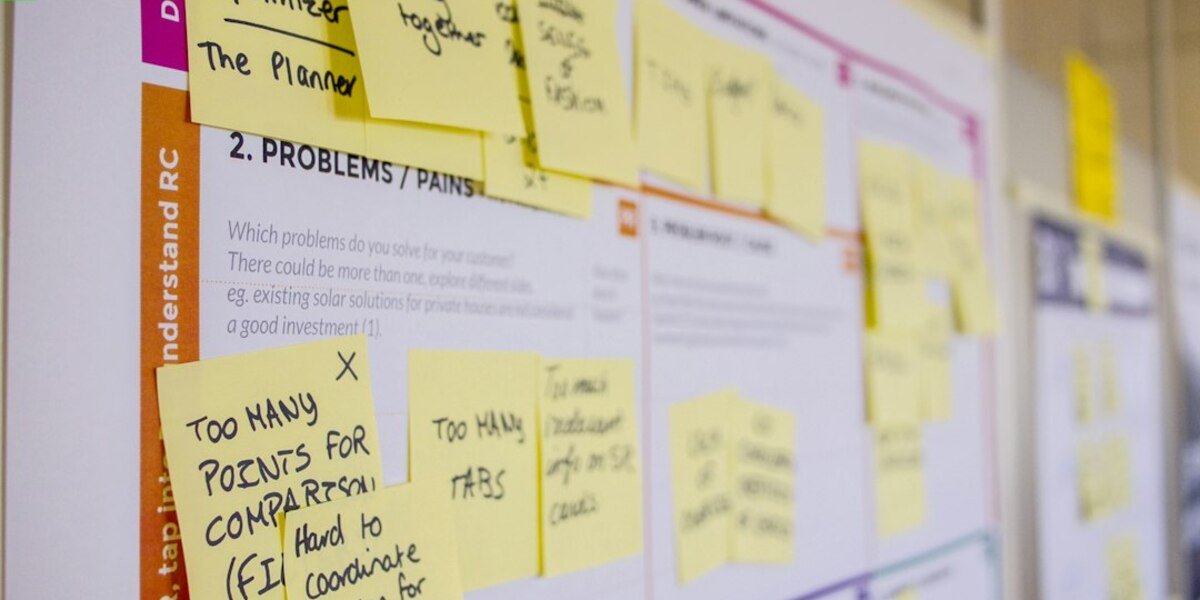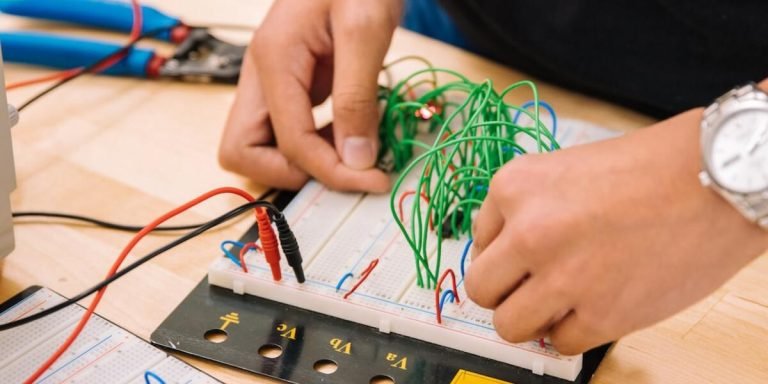Benefits Technology Has on Modern Childhood Education: A Comprehensive Look
Understanding the benefits technology brings to modern childhood education is crucial in today’s digital era. It not only transforms teaching methods but also enhances learning outcomes for children across various age groups comprehensively. Indeed, it necessitates a fresh perspective on how we perceive and approach early-years pedagogy.
This comprehensive look highlights the ways in which such integration impacts classroom dynamics and overall learning processes positively. From fostering engagement through interactive software to facilitating personalized instruction with adaptive AI algorithms, technology truly has revolutionized traditional educational methodologies.
Did you know?
According to the International ICT Literacy Panel, children as young as four can start learning computer skills and developing a comfort level with technology that will help their educational journey in later years.
Understanding the Role of Technology in Modern Learning Environments
In the contemporary educational landscape, technology stands as a pivotal cornerstone reshaping traditional ways of learning. Integrating modern technologies into classrooms doesn’t mean merely replacing pen and paper with screens but envisages an environment where children actively engage in hands-on experience that encourages creativity, critical thinking, collaboration and improved information retainment.
The role of technology in education goes beyond facilitation; it serves as an aide for individualized instruction catering to each child’s unique needs. This approach allows students who may not thrive in standard lecture environments to grasp complex concepts at their pace. For instance, using adaptive software or applications provides personalized content according to student’s understanding level thus enhancing comprehension while making learning enjoyable.
Moreover, tech-tools often trigger interactive participation which is instrumental for practical knowledge enhancement amongst young learners. Technology-fueled activities like virtual experiments or global online collaborations expose them early on to real-world problems sharpening their problem-solving skills all whilst providing educators valuable insights about students’ performances through data analytics.
The Impact of Interactive Whiteboards and Smart Classrooms
The evolving landscape of education has seen the integration of technology becoming more prominent. Particularly in the form of interactive whiteboards and smart classrooms, technology is reshaping our understanding and approach to learning.
Interactive whiteboards have become a staple feature in modern classrooms. Their touch-sensitive displays allow teachers to present lessons with enhanced interactivity, thus making information more digestible for young students. These digital boards can display texts, images or videos from computers which offer vivid visual aids especially vital when explaining complex concepts visually might be critical.
Moreover, they provide an avenue for students themselves to interactively contribute during classes by dragging items across the screen or drawing diagrams thereby fostering engagement and active participation – key factors known to improve knowledge retention rates significantly.
Smart classrooms leverage technology’s benefits in today’s educational environments, integrating tools such as:
- Instant-loading online quizzes on student devices to prevent cheating and provide immediate feedback.
- Video conferencing platforms enabling real-time interactions between participants worldwide, overcoming distance barriers.
- Virtual reality systems offering immersive experiences to increase interest levels among students.
These technologies aim to enhance personalized learning experiences and meet diverse learner needs.
Virtual Reality (VR) and Augmented Reality (AR) as Educational Tools
Virtual Reality (VR) and Augmented Reality (AR) are transforming education, ushering in a wave of immersive learning experiences. As we delve into their application as educational tools, one can’t ignore the myriad benefits technology brings to modern classrooms.
Firstly, VR and AR make the process of teaching and learning more interactive. Beyond the traditional classroom setup where students passively receive information from teachers or textbooks; these technologies create engaging virtual environments for active exploration and hands-on experiences. For instance, through VR goggles a student studying biology might traverse human anatomy in 3D space rather than simply observing static images on paper.
Secondly, they cater to different styles of learners – visual learners get stunning imagery while auditory learners benefit from narrative explanations accompanying simulations. This flexibility means every child gets an opportunity to learn leveraging his/her strengths which ultimately boosts comprehension levels across diverse subjects ranging from arts & music to complex scientific theories.
Despite being digital methodologies at core ,VR/AR ensure that social aspects of group dynamics aren’t overlooked either.By creating shared spaces for remote collaboration students partake in collective problem-solving quests thus instilling teamwork skills critical for real-world scenarios too.They also break down geographical barriers allowing intercultural exchange between kids globally enhancing cultural competency- an essential trait in today’s interconnected world!
Bridging the Digital Divide: Equitable Access to Technological Resources
In the contemporary landscape of 2023, bridging the digital divide in education has transformed from a luxury to a necessity. Equitable access to technological resources is fundamental for childhood education to ensure every child, irrespective of their socio-economic status, gets an equal chance at comprehensive learning and overall development.
The integration of technology in educational settings fosters interactive engagement and dramatically enhances pedagogical methods enabling more effective teaching-learning experiences. As we leverage tech tools like smartboards or tablets within classrooms or e-learning platforms during remote schooling situations, they bring transformative changes to traditional chalk-and-talk systems by promoting active learning conditions where students actively participate instead of passively receiving information.
Moreover, children exposed early on to different useful technologies develop critical life skills that are indispensable in our increasingly digital world – be it problem-solving abilities through coding lessons or collaboration competencies via online teamwork. Therefore empowering all pupils with equitable opportunities becomes paramount not just from an academic perspective but also as preparatory measures for flourishing careers later on requiring adeptness with emerging technologies.
Initiatives to Provide Devices for All Students
With the rapid advancement in technology, equipping all students with individual learning devices has become increasingly paramount. An initiative that aims to bridge the digital divide and promote equitable access to technological resources at a global scale.
Technological integration approaches have been gaining momentum since their inception, particularly for augmenting teaching methodologies. Here are some key initiatives aiming to provide every student with devices:
1. Government Funding: Many governments worldwide recognize the benefits technology brings into classrooms. They’re investing billions of dollars on providing laptops and tablets free of cost or at subsidized rates through public school systems.
2. Crowdfunding Platforms: These online platforms play an instrumental role where community members contribute towards purchasing tech tools for schools who don’t necessarily benefit from government funding but still desire quality education for their wards.
3. Collaboration with Tech Companies: Schools collaborate directly with companies such as Google & Apple which sell educational products like Chromebooks & iPads respectively at discounted prices making them affordable even under stringent budgets.
4.Technology Grants: Technology grants provided by foundations or private institutions aim toward increasing digital literacy among children irrespective of socio-economic strata.
Overcoming Connectivity Barriers in Remote Areas
The global pivot toward remote learning has spotlighted the digital divide affecting children in under-resourced communities and rural areas. Despite technological advancements, many schools now leveraging the benefits technology offers cannot reach all students equally due to this connectivity crisis.
One of these hurdles is hardware accessibility since not every student owns a personal computer or tablet at home. Schools can bridge this gap through initiatives like providing free laptops, tablets, or low-cost rentals to families without such resources. Remember that it’s essential also to offer technical support for maintaining these devices properly over time.
Another significant barrier lies with internet access itself – some households lack stable broadband service either due to unavailability or high costs associated with it in certain locations. Here comes into play community-driven solutions like setting up Wi-Fi hotspots in public places where students can connect their school-provided devices and complete assignments as required.
Lastly, software familiarity forms an integral part of overcoming connectivity barriers too. Oftentimes educators assume that because today’s generation grew up around tech gadgets they naturally possess knowledge on using them effectively – however practical scenario suggests otherwise sometimes! Hence including IT lessons within curriculum focusing on explaining how exactly utilise online platforms for education becomes crucially important here – leading youngsters towards becoming better self-learners across distance boundaries!
Measuring the Benefits of Technology Integration on Student Outcomes
The merits of integrating technology into our educational systems have increasingly become the subject of much discourse in recent times. The rapid advancement and ubiquity of technology is revolutionizing how we impart knowledge to youngsters, proving that tech can be a significant ally in boosting student outcomes. From enhancing learning engagement, catalyzing personalized instruction to equipping students with 21st-century skills – leveraging digital platforms for education offers an array of benefits.
Utilizing cutting-edge tools like AI-driven tutoring systems or interactive whiteboards makes academic content more accessible and interesting, thereby increasing student engagement. This approach directly leads to improved focus and retention among learners which ultimately reflects on their overall performance outcomes. Further adding weight to this argument are numerous research studies suggesting strong correlations between increased use of edtech resources and better grades as well as standardized test scores.
On another front, one cannot overlook the role played by these technological interventions in facilitating tailored teaching strategies catering individual’s unique learning styles and pace. Adaptive software programs can detect areas where a particular learner struggles while providing additional practice problems or virtual tutorials accordingly; thus ensuring nobody gets left behind due to traditional ‘one-size-fits-all’ instructional methods.
Moreover, such exposure not only prepares children for an inevitable digitally inclined future but also cultivates foundational competencies encompassing critical thinking & problem-solving alongside instilling creativity & innovation traits – all integral components defining success within this era’s evolving work landscape.
Analyzing Improvements in Engagement and Retention Rates
The digital age has brought numerous innovations into the classroom. Among these, technology integration stands out for its potential to reshape education and foster better student outcomes significantly. Especially when we look at engagement and retention rates, the benefits of technology become apparent.
Integrating technology enhances student engagement by:
- Transforming passive learning into an active process.
- Involving students as co-creators of their learning journeys with tools like interactive whiteboards and virtual reality environments.
- Increasing student interest and participation through collaborative online platforms.
This approach actively involves all participants in the learning process, making lessons more engaging.
Another key benefit is improved accessibility ! With robust adaptive technologies available many special needs students who might struggle traditional methods can now fully participate engage comprehensively leading enhanced inclusivity diversity classrooms adding new perspectives enriching overall experience everyone involved.
Moving on from engagement rate enhancements , let us delve deeper into impact this may have on memory recall retention capacities among learners particularly given current ongoing shift towards remote home-based schooling scenarios due emergency situations pandemic lockdowns .
Evaluating Standardized Test Scores Pre- and Post-Tech Implementation
There’s no denying that the integration of technology into education has dramatically reshaped our learning environments, and a significant way to quantify these changes is by evaluating standardized test scores before and after its implementation. One of the key benefits technology offers in academics pertains directly to enhanced student outcomes.
Before diving deep into the analysis, it’s important to remember what constitutes standardized tests. They are essentially examinations administered consistently across different schools or regions designed with standard questions and scoring criteria. These benchmark assessments provide a uniform measure for comparing student performance objectively without bias toward any particular school curriculum design.
Let’s examine how to measure improvements from integrating technology in classrooms by analyzing test results before and after implementation:
Firstly, observe overall score trends: Survey if there exists an upward trend within students’ exam scores once they’ve commenced employing handy digital tools like educational apps or interactive smart boards as classroom resources instead of traditional pen-and-paper methods alone?
Secondly, focus on individual subject areas: Have certain subjects experienced more uplifting effects than others? For instance, complex disciplines such as mathematics often see greater improved grades due to software which simplifies problem-solving steps thus enhancing understanding better than conventional teaching methodologies might have achieved otherwise.
Thirdly consider whether weaker academic performers experience amplified improvement rates when compared against their higher-performing peers who may not require supplemental assistance from technological yields quite as much?
Conclusion
In sum, it is clear to see that the benefits technology brings to modern childhood education cannot be understated. From fostering creativity and stimulating critical thinking, all the way to providing personalized learning environments – technology indeed opens an interactive global classroom right at our fingertips!
Yet, like all tools in life’s toolbox of skills and knowledge sources – its full potential needs correct application. This intricate task lies with us – parents and educators alike! Remember; harnessing these technological advancements for a child’s educational journey requires guidance from informed adults.
Navigate around our website for more information on how we can work together towards educating children effectively using today’s tech-savvy resources along with parent & educator support initiatives available globally.







